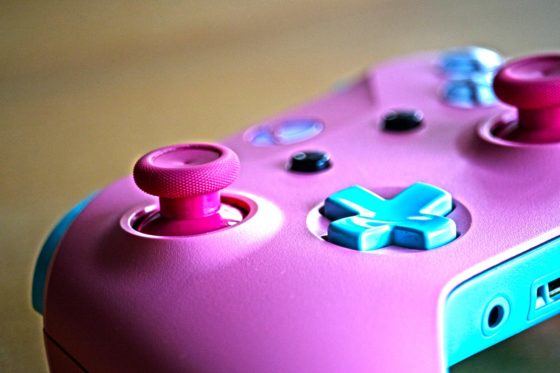Can Video Games Help Children with Cerebral Palsy?

But what about video games?
Sure, video games are fun. But can they help our children? A new study hopes to prove just that.
Let’s take a look at what we know to be the effects of using computer game-based therapy on children with cerebral palsy, current therapy methods for cerebral palsy, and how to get help if your child’s cerebral palsy was caused by a birth injury.
Contents
What types of treatment are available for cerebral palsy?
If your child has cerebral palsy (CP), you know that you’re in for a world of treatment. Many children have orthotic devices that help them walk; some even need surgery to lengthen and loosen tight tendons and muscles, or to correct spine deformities.
Most likely, you’ll have physical therapy. This will start when your child is still young and focus on balance and coordination, plus strengthening the muscles. Constraint-induced movement therapy (CIMT) and hand-arm bimanual intensive therapy (HABIT) help with hand-arm function. Physical therapy can be especially exhausting, with CIMT alone taking 6 hours a day to be effective — while the child can use only the affected arm.
Some children also will need occupational therapy, including learning how to dress and getting in and out of a car. Recreational therapy helps kids through art, sports, and other activities.
Finally, speech therapy helps children get control over not just their communication, but some muscles that allow them to swallow and eat. Many children with CP have intellectual disabilities in addition to speech impediments, so that adds on many more hours of therapy, making for tired kids and parents.
How can we make therapy less intense, and a little more cost-effective? Enter video games.
See also: The Cost of Cerebral Palsy
The Video Game Study: Effectiveness of Treating Cerebral Palsy
Published in JMIR Research Protocols, a May 2017 study investigated the evidence of therapeutic value of video games to improve upper extremity motor function for children with cerebral palsy. Children between the ages of 4 and 10 with moderate upper-extremity impairments and fine motor control abnormalities due to CP were included in the randomized, controlled, single-blind clinical trial. Parents and therapists were interviewed, while the children were tested using the Quality of Upper Extremity Skills Test (QUEST) and Peabody Developmental Motor Scales, Second Edition (PDMS-2) outcome measures.
The study evaluated children in India and Canada, where incidences of children being diagnosed with CP are increasing. CP affects fine and gross motor skills, and often visual-spatial processing skills; the ability to perform functional tasks with the upper extremities is a key indicator of success later in life. Any sort of therapy for CP should aim to reduce the potential for secondary disabilities, which are incredibly common with CP.
Parents and clinicians rate motivation as the most influential personal characteristic for adherence to therapy and for determining motor and functional outcomes in children with CP. An emerging, promising approach to engaging children in therapy is to incorporate computer games in which a range of learning elements with interactive cognitive challenges help children to positively engage in activities. Studies have provided evidence of the benefits of video games in rehabilitation training and show that well-designed interactive games can improve players’ motor skills and visual-spatial processing skills.
Because traditional therapy methods are generally intense for children, they need to take multiple breaks. Researchers wanted to find a low-cost way for children to get the therapy they needed to improve, but also to “stay in the game” a bit longer than with physical therapy.
How do the computer games work?
Researchers developed a cheap game-based rehabilitation and learning platform, referred to as CGR, with a miniature, wireless, motion-detecting “Therapy Mouse” used as the game controller. It can be attached with Velcro to many objects, and thus used in “exergames” (exercise games) to help children practice their fine and motor skills. When the special mouse is attached to an object, a fun computer game can be played. The goal-directed manipulation tasks and guided repetition strengthen the brain’s ability to learn.
The groups of children were divided into those ages 4-6 and 6-10 for 16 weeks, with three, 45-minute sessions per week of both the computer game group and the control group, which received the normal physical therapy options, such as dynamic stretching of spastic muscles and weight-bearing exercises for upper extremities. Reaching for rings, throwing a ball, turning a doorknob, and picking up marbles from sand are all examples of these exercises.
The experimental group got to do stretching exercises in addition to the game-based play (at the same 45-minute total sessions as the control group). Transport and reaching movements weren’t the only exercises covered, like with the control group. Instead, finger-hand function was targeted, with different computer games requiring various speeds, precision, and repetition.
Each object-manipulation exercise was done for 2 to 4 minutes. Some of the computer games included requiring the player to move the mouse cursor to pop bubbles, or move a hummingbird up and down so it could touch flowers. Some games included distractors and moving backgrounds.
The study is still underway, so research results are not yet known. However, we do know that based on past studies, playing Wii sport games helped an adolescent with CP improve visual-perceptual processing, postural control, and functional mobility. Virtual reality also may have positive benefits for children with cerebral palsy.
There is hope yet.
My Child Has Cerebral Palsy. How do I get help?
You may not know what caused your child’s cerebral palsy. The brain damage associated with cerebral palsy may have occurred before birth, or it may have been acquired. Sometimes the cause is genetic, and sometimes it’s because of a difficult labor or pregnancy complications.
When a doctor is at fault for your child’s cerebral palsy, you have options. You don’t have to go through the costly expense of treatment alone. We at Safe Birth Project may be able to help. Contact us today.








Leave a Reply
Want to join the discussion?Feel free to contribute!